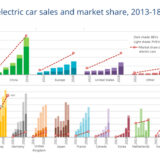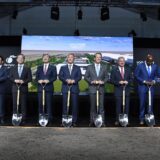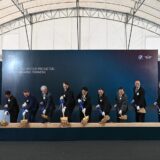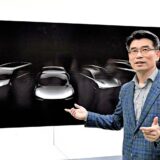Ford Motor reviewing China operations as part of broader strategy
Ford Motor Co. is reportedly reviewing its China operations as part of a broader strategy announced by Jim Hackett, president and CEO, “to refocus and thrive in an evolving and disruptive period for the auto industry.”
The review of its China operations will likely see Ford focus on electric commercial vans, as electric cars, according to Reuters.
“Ford was built on the belief that freedom of movement drives human progress,” said Hackett, who became Ford president and CEO on May 22. “It’s a belief that has always fueled our passion to create great cars and trucks. And today, it drives our commitment to become the world’s most trusted mobility company, designing smart vehicles for a smart world that help people move more safely, confidently and freely.”
The company recently announced a dedicated electrification team within Ford, focused exclusively on creating an ecosystem of products and services for electric vehicles and the unique opportunities they provide. This builds on Ford’s earlier commitment to deliver 13 new electric vehicles in the next five years, including F150 Hybrid, Mustang Hybrid, Transit Custom plugin hybrid, an autonomous vehicle hybrid, Ford Police Responder Hybrid Sedan, and a fully electric small SUV.
By 2019, 100% of Ford’s new U.S. vehicles will be built with connectivity. The company has similarly aggressive plans for China and other markets, as 90% of Ford’s new global vehicles will feature connectivity by 2020.
Ford also will continue to leverage partnerships, remain active in M&A and collaborate to accelerate R&D. The company recently announced it was exploring a strategic alliance with Mahindra Group as it transforms its business in India, and Zoyte with the intention of developing a new line of low-cost all-electric passenger vehicles in China.
In the next five years, Ford is aiming to reduce new vehicle development time by 20%, with new tools and fewer orderable combinations. Through the use of virtual assembly lines, the company has been able to reduce new model changeover time by 25%.
Accelerating and scaling 3D printing, robotics, virtual reality tools and big data will improve logistics and enable a more efficient manufacturing footprint.
“We believe Ford will achieve its competitive advantage by focusing deeply on our customers – whether they’re drivers, riders or cities – and that’s where we are playing to win,” Hackett said.
The company said it aims to reduce automotive cost growth by 50% through 2022. As part of this, Ford Motor is targeting USD10 billion in incremental material cost reductions. The team also is reducing engineering costs by USD4 billion from planned levels over the next five years, by increasing the use of common parts across its full line of vehicles, reducing order complexity and building fewer prototypes.
This starts with the company reallocating USD7 billion of capital from cars to SUVs and trucks, including the Ranger and EcoSport in North America and the all-new Bronco globally. Ford also has plans to build the next-generation Focus for North America in China, saving capital investment and ongoing costs.
Further, Ford is reducing internal combustion engine capital expenditures by one-third and redeploying that capital into electrification – on top of the previously announced USD4.5 billion investment.














